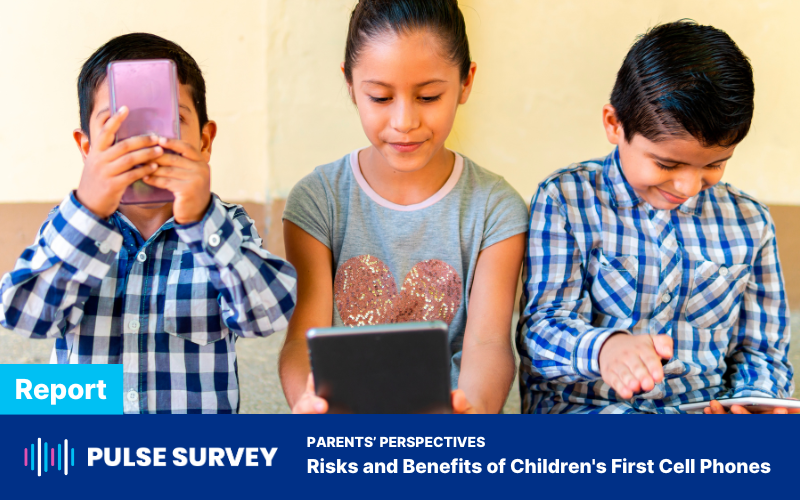In this pulse survey about kids’ cell phone ownership, parents reported that connection and safety were the primary motivators for getting a child a cell phone. Notably, parents whose children do not have phones were more concerned about potential consequences than parents of children with phones.
Children’s First Cell Phones: Parents’ Perspectives on Risks and Benefits

Suggested Citation
Bickham DS, Hunt E, Kavanaugh JR & Rich M. (2021). Understanding Children’s First
Cell Phones: Parents’ Perspectives on Risks and Benefits. Boston, MA: Digital Wellness Lab. https://digitalwellnesslab.org/pulse-surveys/childrens-first-cell-phones-parents-perspectives-on-risks-and-benefits/






